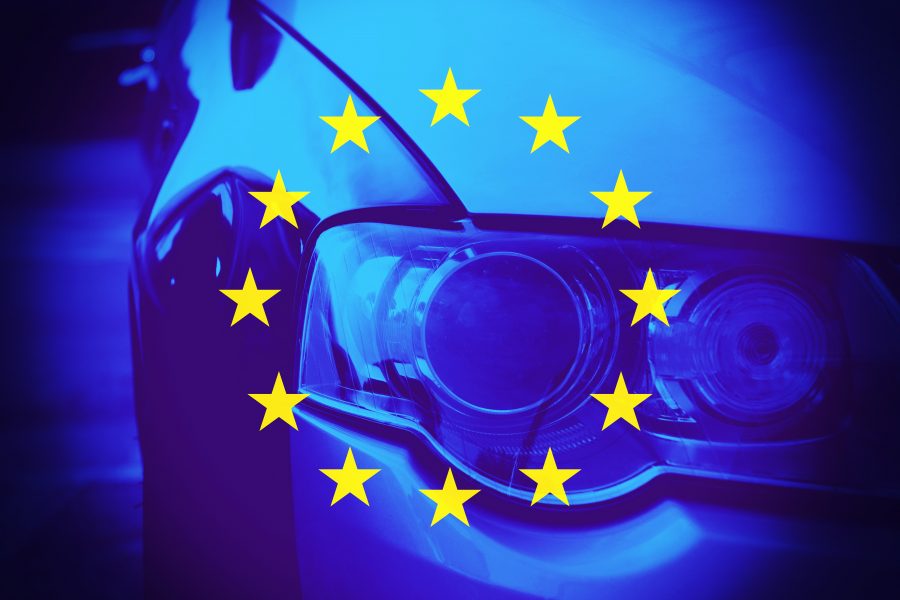
For a European recycling industry: taking the opportunity of EVs batteries
5 April 2022
On the Spotlight: Investor-State Dispute Settlement Mechanisms and Climate Transition
3 May 2022By Johan Bracht
Electric vehicles (EV) sales largely surpassed the 2 million mark in the EU in 2021 (17% market share), while the US is still lagging behind, barely reaching 600k EV sales (4% market share), despite hosting global EV pioneers such as Tesla. To put this into context, China, where regulation also drives the EV market, sold almost as many EVs in December (530k) as the US did in the entire last year. However, looking back a few years, EV sales figures in 2018/2019 were almost identical in the US and the EU, which begs the question, when and why did this divergence occur?
Beyond subsidies, which both jurisdictions have in place, analysing regulatory differences between the two markets offers some insights. The divergence took place from 2020 onwards, the year the EU’s car fleet emission regulation (R2019/631) came into effect. This regulation forces auto makers to comply with an overall fleet emissions target (57 miles per gallon or 95gCO2/km) or pay heavy fines (€95/g exceeding the limit).
As electric vehicles are categorized as ‘zero-emission vehicles’, auto makers used EVs to offset high-emitting, high-margin SUVs, and sport cars, explaining the current 17% EV sales market share. Furthermore, R2019/631 becomes more stringent over time, essentially forcing auto makers to pivot to full electric between 2030 and 2035. The empirical proof are yearly fleet emission compliance figures, which auto makers are mandated to share with the EU on a yearly basis. These compliance figures are within a margin of 2-5%, year after year, highlighting that auto makers sell just as many EVs as they are legally required to avoid paying fines to the EU.
This illustrates that EU auto makers did not pivot towards EVs out of environmental consciousness alone, but were driven by costly regulation. While R2019/631 does have some regulatory loopholes (super credits, mass-based adjustments, etc.), the bottom line shows that it has been effective to kickstart the European EV market, which is supported by 2 years’ worth of EV sales data. The downside with stringent regulation is the lack of flexibility, leading analysts to project a stagnation in EU-EV sales until the new round of targets comes into effect during the mid-2020s.
Yet, even imperfect regulation is better than no regulation. In the US, the political contagious car emission standard is changing with each incoming administration, destroying all long-term strategic planning, while still lagging years behind EU regulatory achievements. Although the recent revision by the EPA on new vehicle emission standards is a step in the right direction (55 miles per gallon), it is still not even comparable to the EU’s R2019/631, due to the penalty mechanism the EU regulation includes and the time difference in which both regulations came into effect. For illustration, if the Volkswagen Group misses its CO2 target by merely 1%, it would have to pay around 330 million Euros[i] in fines, depending on how many vehicles it sold during the fiscal year (see calculation below). Furthermore, the EU fines have already been leading the automotive industry into an EV transition since 2020, three years before the new EPA regulation will even come into effect (2023). In fact, as the EPA regulation concludes its first year (2024), the EU regulation will already be entering its second, more stringent, emissions cycle. This will reduce the EU-CO2 cap by another 15%, a cap which was already more stringent than the EPA equivalent in the first place, further widening the gap between the EU and the US electric vehicle market.
In the US, political and private sector’s (GM, Ford and Stellantis) pledges to electrify 50% of new sales by 2030 are toothless, as there is no accountability mechanism in place if targets are not met. The strongest accountability mechanism is concrete regulation that foresees economic penalties, which is why the EU is beating the US in the race to EVs, and why it will continue to do so if the US does not establish a long-term and effective regulatory strategy. As a consequence, just last week, these regulatory loopholes were addressed by the NHTSA, re-introducing penalties for non-compliance (~$14/tenth of a mile per gallon) and raising the standards for fuel efficiency by 8-10% between 2024-2026. While representing another promising step in the right direction, effectiveness will have to be measured against EV sales data, benchmarked against the EU, and prove long-term stability, despite a constantly changing political landscape in the US.
About the Author
Johan Bracht is a graduate student at Sciences Po, Paris where the focus of his studies is on energy markets. Mr. Bracht previously worked as an EU-policy analyst for Hydrogen Europe in Brussels and for BMW in Geneva and Munich, managing electric vehicle markets.
*This Blog Entry was selected for publication under the call with the subject: What future for electric vehicles?
[i] VW Group EU fleet target = 118.5g + 2% = 120.87 g (not 95 g due to mass-based adjustment)
If target is missed by 1%: 120.87 * 0.01= 1.2087 g (in excess of fleet target)
Fine for missing 1% of target per vehicle: 1.2087 * 95 €/g (fine) = 114.8265€
Total potential fine to EU: 114.8265€ * 2,860,400 cars (VW group deliveries in the EU in 2021) = 328,449,721€


